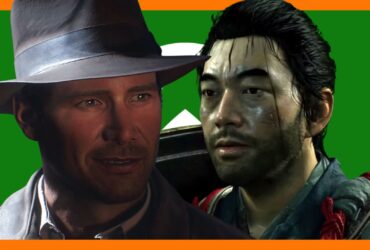Summary
- Indiana Jones and the Great Circle offers an authentic gaming experience mirroring the film series.
- The game features puzzles reflecting Indy’s improvisational spirit and trial-and-error approach.
- Players must navigate challenging puzzles in dungeons with limited guidance, embodying Indy’s resourcefulness.
Upon playing Indiana Jones and the Great Circle, it’s fairly easy to see the great lengths developer MachineGames has gone to ensuring it is one of the most authentic Indiana Jones gaming experiences ever made. From the sounds to the visuals to the pacing and exploration, Indiana Jones and the Great Circle is the Indiana Jones film experience it needed to be in gaming form. This commitment to authenticity shows itself especially in the character of Indiana Jones, and the design of the puzzles in the game are useful in emphasizing his persona as a grounded and resourceful archaeologist who knows little more than the players themselves.
Indiana Jones and the Great Circle is chock-full of puzzles for players to solve, whether it be simply determining the code necessary to unlock a lockbox or solving an elaborate puzzle in an underground tomb. However, these puzzles are more than a fun gameplay element, as they are intricately designed in such a way to mirror Indy’s improvisational spirit, as they require the same kind of spirit from players.

Related
How Indiana Jones and the Great Circle Makes Its Side Quests Feel Like Essential Adventures
Indiana Jones and the Great Circle’s side quests are so seamlessly integrated into the story that it’s hard to tell whether they’re actually optional.
Indiana Jones and the Great Circle’s Puzzles Mirror Indy’s Improvisational Spirit
Much of Indiana Jones’ Success Is Accidental or Off-the-Cuff
At the end of the day, Indiana Jones is not a superhero; he’s just a regular man with no superhuman abilities, although his immense intelligence could be considered a “superpower.” Despite not being a superhero, however, his humanity is a core aspect of his charm and appeal, as it not only makes him relatable, but makes the situations he often finds himself in more believable. Even though many of the relics and artifacts Indiana Jones ends up chasing are tied to theories and myths, the series still largely leans on realism, and that flows all the way down to the character of Indiana Jones and his approach to the pursuit.
Because Indiana Jones doesn’t have any superhuman abilities, most of his success is accidental or the result of off-the-cuff improvisation. As he explores ruins and tombs that haven’t been set foot in for hundreds or even thousands of years, he has no way of knowing what to expect as far as traps and puzzles go. Instead, he has to figure it out along the way through a patient process of trial and error, as any normal person would in a similar situation. That being said, he does have a keen awareness of his surroundings, and this is what allows him to be so resourceful when he absolutely needs to be.
Indiana Jones’ trial-and-error approach also applies to the combat situations he finds himself in, since he isn’t a trained martial artist and instead relies on his scrappy and resourceful nature to subdue his enemies.
Indiana Jones and the Great Circle’s Puzzles Reflect Indy’s Trial-and-Error Approach
Just like how Indiana Jones approaches almost everything improvisationally through a process of trial and error, Indiana Jones and the Great Circle expects the same from its players. As they venture into the dusty, cobweb-ridden dungeons of Indiana Jones and the Great Circle, players receive almost no guidance from the game itself, apart from some occasional dialogue from accompanying NPCs. In fact, in their first dungeon during Indiana Jones and the Great Circle‘s prologue, during its recreation of Raiders of the Lost Ark‘s opening sequence, they may find themselves triggering trap after trap because they aren’t moving slowly enough to observe their surroundings.
This lack of guidance really plays a part in some of Indiana Jones and the Great Circle‘s later puzzles, as players might happen upon a room in a dungeon with levers and switches, and absolutely no way of knowing what these levers and switches do, or whether the outcome of activating one will be positive or negative. In those situations, then, the only option is to activate them and hope for the best. Fortunately, at least most of the time, activating a lever or switch in Indiana Jones and the Great Circle doesn’t produce negative results. However, there are times when they don’t produce any results at all, continuing to leave players guessing.
At the end of the day, Indiana Jones is not a superhero; he’s just a regular man with no superhuman abilities, although his immense intelligence could be considered a “superpower.”
In the end, Indiana Jones and the Great Circle succeeds not only as a faithful adaptation of the franchise but as an experience that captures the very essence of Indiana Jones himself. Indiana Jones and the Great Circle‘s puzzles aren’t just mere obstacles as they can be in other games; they are opportunities for players to embody Indy’s resourceful, adventurous, and off-the-cuff mindset. By challenging players to think on their feet and approach every puzzle through trial and error, Indiana Jones and t he Great Circle brings Indiana Jones to life by reminding players that much of Indiana Jones is just as much about the journey as it is the destination.













Leave a Reply